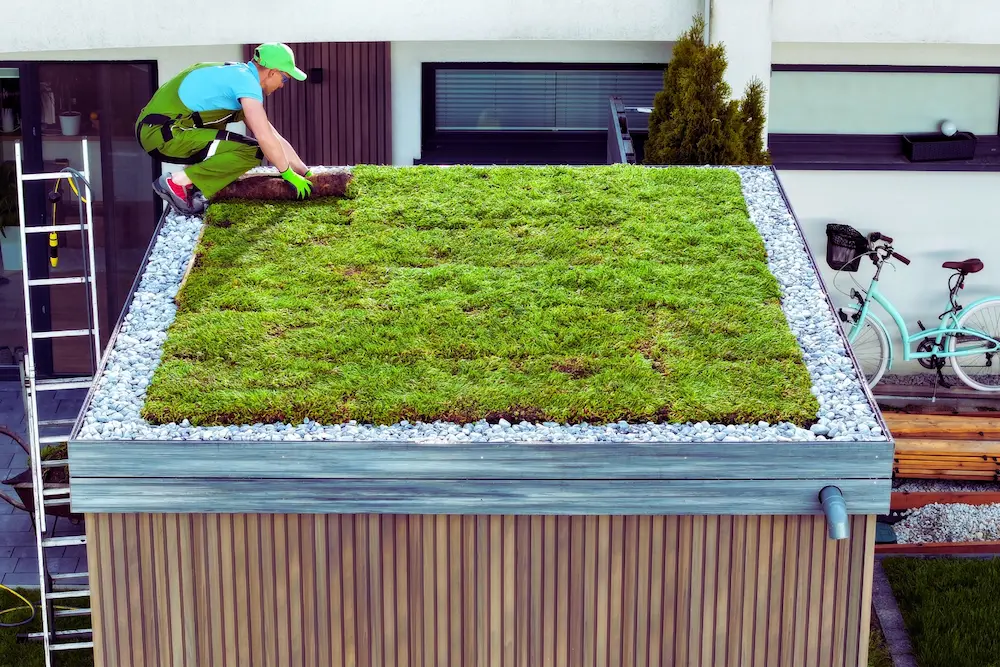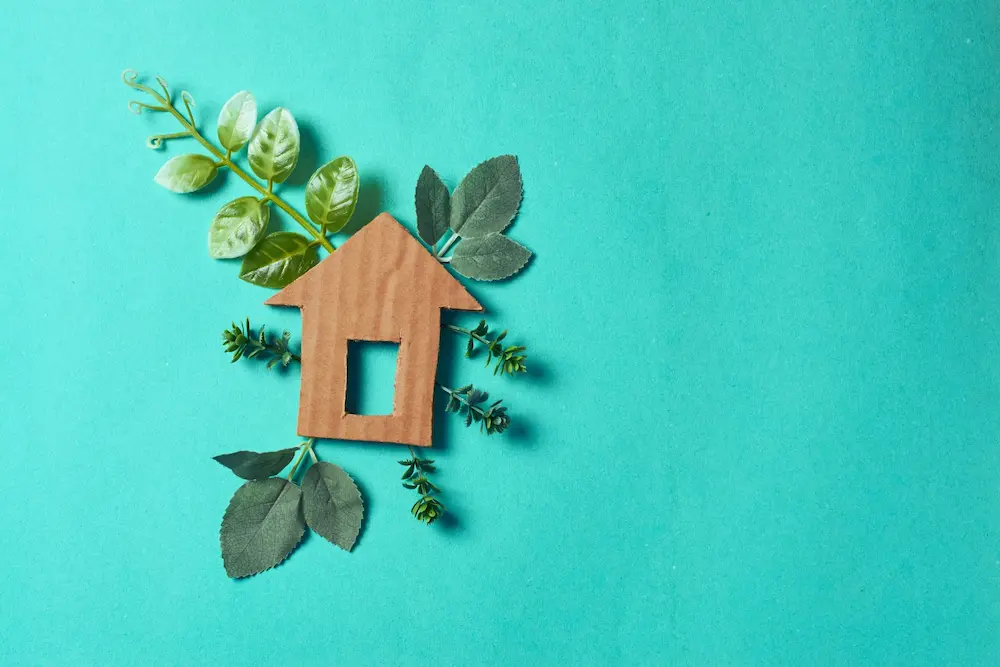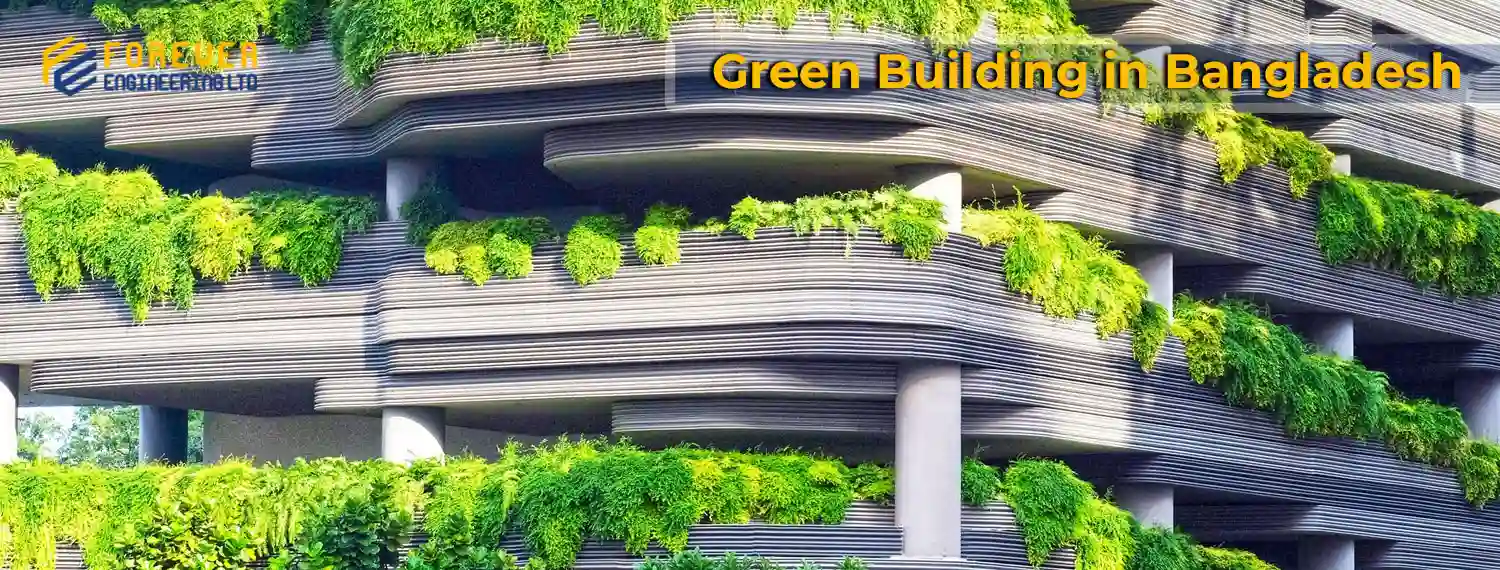Bangladesh is a developing country in South Asia that faces a number of issues in terms of sustainable development. The country’s rapidly expanding population and developing urbanization make it imperative to put green building ideas into practice that will help ensure a sustainable future. In order to provide a blueprint for a sustainable future, this article will examine the idea of green building in Bangladesh. So let’s get started.
The History of Green Building in Bangladesh
Table of Contents
Toggle
Green building in Bangladesh stretches back to the early 2000s when the notion of sustainable development first gained international awareness. Bangladesh, a developing nation experiencing increasing deforestation, air and water pollution, and high energy consumption, was faced with a number of environmental difficulties due to its growing population and urbanization.
In Bangladesh, one of the first examples of green architecture may be seen in the rural areas, where traditional structures have long been built using materials that are readily available there, like bamboo, mud, and thatch. The natural ventilation and insulation provided by these environmentally friendly materials help to keep the inside cool throughout the sweltering summer months.
Green building has gained popularity in recent years, particularly in Dhaka, the capital city. The integration of sustainable design ideas and technologies into contemporary construction practices has been the focus of numerous initiatives and projects.
The SURE House, a sustainable urban home and office building in Dhaka, is one prominent example. The structure has a number of environmentally friendly elements, including energy-efficient appliances, rainwater collection systems, and solar panels. It illustrates the possibility of low-carbon dwelling options that lessen their negative effects on the environment and encourage energy efficiency.
Additionally, the promotion of green construction principles throughout the nation is greatly aided by the Bangladesh Green Construction Council (BGBC). To encourage architects, builders, and developers to use sustainable construction principles, the council provides training and certification programs. Their initiatives have contributed to increasing public awareness of the value of green construction and its ability to slow down global warming.
Key Takeaways:
- In Bangladesh, green building encourages the use of sustainable materials, energy efficiency, water management, and the creation of healthy living spaces.
- In Bangladesh, green building may reduce waste production, lessen climate change, produce energy-efficient structures, conserve water, and provide a healthy living environment.
- The development of green building principles in Bangladesh is being driven by the Green Building Certification Institute (GBCI), government initiatives, and awareness and education programs.
- Opportunities for green building in Bangladesh include the growing demand for energy-efficient structures, renewable energy sources, and the possibility of creating jobs. Challenges for green building include low awareness, high initial costs, and a lack of technical skills.

Green Building Principles in Bangladesh
Green building is the process of creating structures that are environmentally benign, resource-efficient, and socially responsible. Green building design and construction, which emphasize the use of sustainable materials, lower energy usage, water conservation, and the promotion of healthy living conditions, have become more and more popular in Bangladesh in recent years.
Sustainable Materials
Sustainable materials like bamboo, repurposed wood, and fly ash bricks are used in green buildings in Bangladesh to lessen their negative effects on the environment and encourage the wise use of resources.
Energy Consumption
Energy-saving elements found in green buildings include solar panels, energy-efficient lighting, insulation, and renewable energy sources. By taking these steps, energy consumption is drastically decreased and a more sustainable energy future is facilitated.
Water Conservation
Water-saving techniques like rainwater collection, water-efficient fixtures, and greywater recycling are given priority in Bangladeshi green buildings. This encourages appropriate water management and helps to address the problems associated with water scarcity.
Healthy Living Environment
To maintain a healthy indoor atmosphere, green buildings place a high priority on the use of non-toxic materials and efficient ventilation systems. This is especially crucial in Bangladesh, as the country’s fast urbanization has raised pollution levels and health hazards.
By applying these guidelines to building design, sustainable green building that are socially and economically responsible in addition to being ecologically benign can be produced.
Key Components of Green Infrastructure

1. Green Roofs
Green roofs, sometimes referred to as living roofs, are constructed with soil and plants placed on top of a waterproof membrane, acting as a growing medium. They assist in managing stormwater, lowering the effects of urban heat islands, and enhancing air quality. Green roofs also act as insulation, which lowers the amount of energy needed for heating and cooling.
2. Rain Gardens
Rain gardens are vegetated, low-lying basins that are intended to catch and retain rainfall from streets, driveways, and roofs. They improve the quality of the water by lowering runoff, replenishing groundwater, and filtering pollutants.
3. Permeable Pavements
By allowing water to seep through the surface, permeable pavements lessen runoff and encourage groundwater recharge. Pervious concrete, permeable interlocking pavers, and porous asphalt are some examples of these types. They lessen flooding and aid in stormwater management.
4. Green Walls
Green walls, also referred to as vertical gardens, are covered in vegetation that is either rooted in the wall itself or in wall-mounted pots. They offer insulation, better air quality, and increase a building’s visual appeal.
5. Community Gardens
Plots of land cultivated by locals to foster social cohesiveness, local food production, and environmental education are known as community gardens. In addition to offering ecosystem services like pollination and carbon sequestration, they improve urban green space.
Importance of Green Building in Bangladesh
In Bangladesh, implementing green commercial building techniques is essential for reducing the consequences of climate change and advancing sustainable development. Sea level rise, a shortage of water, and an increase in the frequency of floods and cyclones are just a few of the effects of climate change that the nation is now feeling. Bangladesh has the potential to lessen its environmental footprint and contribute to a sustainable future through the adoption of green building principles.
Climate Change Mitigation
Rising sea levels and flooding pose a serious threat to Bangladesh’s population and economy, making it one of the nations most susceptible to the consequences of climate change. The nation may lessen greenhouse gas emissions and lessen the effects of climate change by implementing green building methods.
Energy Efficiency
Energy-efficient elements like insulation, energy-efficient lighting, and renewable energy sources like solar panels are all included in Bangladeshi green buildings. By taking these steps, energy consumption is drastically decreased and a more sustainable energy future is facilitated.
Water Conservation
Water-conserving techniques including rainwater harvesting, water-efficient fixtures, and greywater recycling are given priority in green buildings in Bangladesh as the country’s water scarcity becomes an increasing problem. This encourages appropriate water management and helps to address the problems associated with water scarcity.
Waste Reduction
By including recycling and waste management technologies, green buildings aim to reduce the amount of trash generated. This not only lessens the negative effects on the environment but also encourages people to dispose of their waste responsibly.
Healthy Living Environment
To maintain a healthy indoor atmosphere, green buildings place a high priority on the use of non-toxic materials and efficient ventilation systems. This is especially crucial in Bangladesh, as the country’s fast urbanization has raised pollution levels and health hazards.
Green Building Initiatives in Bangladesh
Bangladesh has made efforts to promote green building standards in recent years. Here are a few of the projects:
Green Building Certification
The Leadership in Energy and Environmental Design (LEED) certification, which assesses a building’s sustainability performance and promotes the use of green building techniques, was recently established in Bangladesh by the Green Building Certification Institute (GBCI).
Government Initiatives
In addition to providing tax breaks and subsidies to developers that use green building techniques, the Bangladeshi government has established rules and regulations for the development of ecologically friendly structures.
Awareness and Education
In Bangladesh, a number of institutions and groups are actively working to increase public understanding of green building techniques. They teach architects, engineers, and other stakeholders about sustainable construction methods through seminars, training sessions, and workshops.
Green Building Certification in Bangladesh
| Level of Certification | Requirements |
| LEED Certified | Minimum 40 points |
| LEED Silver | 50-59 points |
| LEED Gold | 60-79 points |
| LEED Platinum | 80+ points |
In Bangladesh, the practice of green building certification is becoming more and more common. The LEED system’s several certification levels and the prerequisites for each are displayed in the table above. Obtaining certification incentivizes developers to implement green building techniques and helps guarantee that structures are built in accordance with sustainable principles. In addition, it adds to a more sustainable built environment and raises the property’s worth.
Energy efficiency, water conservation, interior environmental quality, and sustainable site development are just a few of the factors used in the certification process to assess a building’s sustainability performance. A certificate attesting to the building’s dedication to sustainability is given to those who fulfill the certification requirements.
Challenges and Opportunities for Green Building in Bangladesh
Green building practices, which focus on sustainability and environmental friendliness, are gaining momentum globally. In Bangladesh, the adoption of green building techniques presents a mix of challenges and opportunities. Understanding these can help stakeholders navigate the path toward a more sustainable construction industry.
Challenges
High Initial Costs
Barrier: The upfront costs for green building materials and technologies can be significantly higher than those for traditional construction.
Impact: This can deter developers and investors who are focused on short-term financial returns.
Solution: Promoting long-term financial benefits through education and incentives can help offset initial cost concerns.
Lack of Awareness and Expertise
Barrier: There is a general lack of awareness about the benefits and practices of green building among developers, builders, and the public.
Impact: This leads to limited demand and inadequate implementation of sustainable practices.
Solution: Conducting educational campaigns and professional training programs can increase knowledge and expertise in green building techniques.
Limited Access to Sustainable Materials
Barrier: Access to certified sustainable materials and green technologies can be limited.
Impact: This hampers the ability to construct buildings that meet green certification standards.
Solution: Developing a local supply chain for sustainable materials and encouraging imports through policy support can improve access.
Regulatory and Policy Gaps
Barrier: Inadequate regulatory frameworks and lack of stringent building codes that mandate green practices.
Impact: This leads to inconsistent implementation and enforcement of green building standards.
Solution: Strengthening policies, building codes, and providing clear guidelines can facilitate better implementation of green building practices.
Financial Incentives and Support
Barrier: Limited financial incentives for green building projects.
Impact: This reduces the motivation for developers to invest in sustainable construction.
Solution: Introducing tax benefits, subsidies, and low-interest loans can encourage investment in green buildings.
Opportunities
Environmental and Health Benefits
Advantage: There are many advantages of green building. Green buildings reduce energy consumption, lower greenhouse gas emissions, and improve air and water quality.
Impact: This leads to a healthier living environment and mitigates environmental degradation.
Strategy: Highlighting these benefits can drive public support and demand for green buildings.
Economic Savings
Advantage: Over time, green buildings result in lower operating costs due to energy efficiency, water conservation, and reduced waste.
Impact: These savings can offset the higher initial costs and provide financial benefits to building owners and occupants.
Strategy: Educating stakeholders about the long-term economic advantages can encourage investment.
Government Initiatives and International Support
Advantage: There is growing support from the Bangladeshi government and international organizations for sustainable development.
Impact: Policies and programs aimed at promoting green building practices are being introduced.
Strategy: Leveraging this support through collaborations and taking advantage of available incentives can drive the adoption of green building practices.
Market Differentiation and Competitiveness
Advantage: Green buildings can provide a competitive edge in the real estate market by attracting environmentally conscious buyers and tenants.
Impact: This can increase property values and occupancy rates.
Strategy: Marketing green buildings’ unique benefits can enhance their attractiveness and marketability.
Innovation and Technological Advancements
Advantage: Advances in green building technologies and practices are making sustainable construction more feasible and cost-effective.
Impact: Innovations such as energy-efficient appliances, renewable energy sources, and smart building systems enhance building performance.
Strategy: Encouraging the adoption of the latest technologies and fostering innovation in the construction sector can improve green building outcomes.
Community and Social Benefits
Advantage: Green buildings contribute to healthier communities by improving indoor environmental quality and reducing pollution.
Impact: This enhances the well-being and productivity of occupants.
Strategy: Promoting the social benefits of green buildings can garner community support and drive collective efforts towards sustainability.
Green Building Materials in Bangladesh

Bamboo
Widely available and renewable, bamboo is used for structural elements and flooring due to its strength and sustainability.
Recycled Steel
Reduces the need for mining and is highly durable, often used in construction frameworks.
Fly Ash Bricks
Made from industrial waste, fly ash bricks are energy-efficient and have better insulation properties than traditional bricks.
Autoclaved Aerated Concrete (AAC) Blocks
Lightweight, energy-efficient, and offering excellent thermal insulation, AAC blocks are increasingly used in construction.
Low VOC (Volatile Organic Compounds) Paints
These paints improve indoor air quality by emitting fewer pollutants compared to traditional paints.
Cork Flooring
Harvested sustainably, cork flooring is durable, comfortable, and provides good insulation.
Reclaimed Wood
Using recycled wood reduces the need for new timber, preserving forests and reducing waste.
Solar Panels
Harnessing renewable energy, solar panels are becoming more common for providing sustainable electricity.
Rainwater Harvesting Systems
Materials for these systems help collect and reuse rainwater, reducing demand on municipal water supplies.
Green Roofing Materials
Including plants and soil layers, these materials help with insulation, stormwater management, and reducing urban heat islands.
These energy efficient materials for green building contribute to sustainability by reducing environmental impact and improving building efficiency in Bangladesh.
Conclusion
Hopefully, you have learned everything about green building in Bangladesh. Bangladesh’s green construction trend is very promising for developing a sustainable future. In light of the nation’s increasing urbanization and population, green building techniques must be implemented. The application of green construction practices, which include water conservation, energy conservation, the use of sustainable materials, and the promotion of healthy living spaces, can aid in addressing climate change issues and advancing a more sustainable future.
Even if there are a lot of growth prospects, such the creation of jobs and renewable energy sources, there are obstacles that need to be overcome, like low technical expertise, expensive expenses, and lack of awareness. Bangladesh has the potential to lead the way in creating a built environment that is more resilient and sustainable, provided that the government maintains its support and raises stakeholder understanding.

